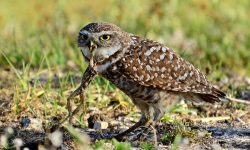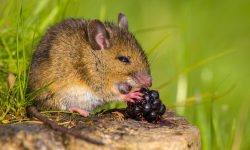Pigs are intelligent, social, and surprisingly clean animals known for their curiosity and love of food. Whether domesticated on farms or living wild in forests, pigs are natural omnivores — meaning they eat both plants and animals. Their diet is diverse, balanced, and essential to keeping them strong, energetic, and content.
So, what do pigs eat? The answer depends on whether they’re wild boars searching for roots in the forest or farm pigs raised for meat and companionship. In this article, we’ll explore 20 foods pigs love the most, what makes them healthy, and how to provide proper nutrition that keeps them happy and thriving.
Understanding What Pigs Eat

Pigs Are Omnivores by Nature
Unlike herbivores such as cows, pigs are omnivores. In the wild, they forage for roots, fruits, insects, and small animals. On farms, they enjoy grains, vegetables, and specially formulated feed. Their digestive system is similar to humans, allowing them to eat a wide variety of foods.
Diet Depends on Lifestyle
A pig’s diet varies depending on its environment. Wild pigs rely on natural foraging, eating plants, roots, and small prey. Domesticated pigs, however, have controlled diets designed to provide balanced nutrition, including carbohydrates, protein, vitamins, and minerals.
The Importance of a Balanced Diet
A healthy pig diet should include energy-rich foods for activity, protein for muscle growth, and fiber for digestion. Overfeeding or poor-quality food can lead to obesity, disease, or nutrient deficiency, so moderation and variety are key.
20 Foods That Keep Pigs Healthy and Happy
1. Corn
Corn is one of the most important staples in a pig’s diet because of its high carbohydrate content and palatability. It provides a quick and sustainable energy source that helps pigs stay active, maintain body heat, and gain healthy weight.
Farmers often grind or crush corn before feeding it to pigs to make digestion easier. It’s a great base ingredient for pig feed, especially when combined with protein sources like soybean meal or peas. However, corn lacks certain amino acids and minerals, so it should never be the sole feed component.
Adding vitamin supplements or mixing corn with legumes and grains creates a balanced diet that prevents nutrient deficiencies. Properly balanced, corn-based feeds help pigs develop firm muscle and smooth skin while maintaining steady energy throughout the day.
2. Barley
Barley is another energy-rich grain that supports healthy digestion and overall body condition. It provides complex carbohydrates, B vitamins, and minerals such as magnesium and phosphorus. Unlike corn, barley has more fiber, which helps regulate bowel movement and improve gut health.
Soaked or steamed barley is easier for pigs to chew and digest. It’s particularly beneficial for finishing pigs, as it helps improve meat texture and fat distribution. Barley also contributes to a more consistent weight gain pattern compared to high-sugar grains.
For balanced nutrition, barley should be mixed with high-protein ingredients or commercial feed to ensure pigs receive all essential nutrients.
3. Wheat
Wheat is a versatile grain that serves as both an energy and protein source for pigs. It contains about 12–14% protein, making it more nutritious than corn in terms of amino acid composition. Wheat-based feed helps pigs develop lean muscle and supports lactating sows that need extra nutrition.
Farmers often use cracked wheat or wheat bran to enhance feed texture and flavor. Wheat bran also adds dietary fiber, which helps prevent constipation and improves gut bacteria balance.
While wheat is nutritious, it’s best used alongside other grains to ensure a balanced amino acid profile. Overuse can cause feed to clump when wet, so it’s often combined with dry ingredients to improve consistency.
4. Oats
Oats are one of the healthiest grains for pigs due to their high fiber and nutrient density. They are rich in beta-glucans, which support heart health and enhance immune function. Oats are particularly beneficial for young pigs, as they promote stable digestion during weaning.
Rolled or crushed oats are easy to mix into pig feed, improving taste and reducing digestive stress. Their high moisture retention also helps prevent dehydration during hot weather.
Oats can be used as a supplement or a base grain, especially in diets for pregnant sows, where they aid in steady energy release without excessive fat gain.
5. Vegetables
Vegetables are a vital part of a balanced pig diet because they supply vitamins, minerals, and fiber that grains alone cannot provide. Carrots, pumpkins, spinach, kale, and sweet potatoes are all excellent choices.
They support strong immune systems, healthy skin, and improved digestion. Leafy greens like kale and spinach contain antioxidants that help fight inflammation and enhance growth. Pumpkins and carrots add natural sweetness that encourages pigs to eat more.
However, owners should avoid feeding raw potatoes, onions, or tomato leaves, as these contain toxins that can harm pigs. Steamed or chopped vegetables are ideal for easy digestion.
6. Fruits
Fruits are a delicious and hydrating treat for pigs. Apples, pears, bananas, watermelons, and melons are packed with natural sugars, vitamins, and antioxidants that support immune function and hydration.
Fruit helps keep pigs cool in summer and can be used as a healthy training reward. Apples provide vitamin C, bananas offer potassium, and melons deliver hydration with minimal calories.
However, fruits should make up only about 10% of a pig’s diet to avoid excessive sugar intake. Always remove seeds or pits, especially from apples and peaches, which can contain trace toxins.
7. Soybeans
Soybeans are the backbone of protein nutrition for pigs. They contain all essential amino acids necessary for muscle growth, tissue repair, and reproduction. Processed soybean meal is one of the most widely used protein sources in pig farming.
Feeding pigs soy-based products promotes rapid growth and strong bones. For piglets and sows, it’s especially important, as it supports healthy milk production and development.
Raw soybeans contain anti-nutritional factors that can reduce digestion efficiency, so they must be roasted or heat-treated before feeding. Balanced properly, soybean feed contributes to excellent meat quality and lean muscle formation.
8. Peas and Legumes
Peas, lentils, and beans are excellent plant-based protein sources that provide essential amino acids, fiber, and complex carbohydrates. They’re especially valuable in regions where soybean production is limited.
Cooked or ground peas improve feed digestibility and energy release. They also provide lysine, a key amino acid for growth. Mixing legumes with grains helps achieve an ideal nutrient balance.
However, raw beans should be soaked or cooked to deactivate enzyme inhibitors that can interfere with protein absorption. In small-scale pig farming, legumes serve as a sustainable and affordable protein supplement.
9. Eggs
Eggs are among the most nutrient-dense foods for pigs. They contain complete proteins, healthy fats, and vitamins such as A, D, and E. Feeding pigs eggs enhances muscle development, coat shine, and overall vitality.
Boiled or scrambled eggs are safer than raw ones, reducing the risk of salmonella or biotin deficiency caused by raw egg whites. They’re especially beneficial for young piglets transitioning to solid food.
Occasional egg treats can boost energy and help maintain healthy weight without overfeeding commercial protein sources.
10. Milk and Dairy
Milk and dairy products are natural calcium and protein sources for pigs. Fresh milk, yogurt, and whey provide nutrients that strengthen bones, aid digestion, and improve gut bacteria.
Pigs enjoy the taste of milk, making it useful for supplementing underweight or recovering animals. Yogurt, in particular, supports gut health and boosts appetite.
However, dairy should be limited to small portions since excess lactose can cause bloating. Always use fresh, unspoiled dairy to prevent digestive issues.
11. Bread and Grains
Bread, rice, and other processed grains offer carbohydrates that supply quick energy. They’re a convenient supplement when natural grains are unavailable.
However, bread should be viewed as a treat, not a staple. Too much can lead to obesity or poor nutrient balance. Soft, whole-grain bread is better than white bread because it contains more fiber and minerals.
Avoid feeding moldy bread or stale grain products, as these can cause toxins that harm the liver and digestive system.
12. Roots and Tubers
Roots and tubers such as beets, turnips, yams, and cassava are nutrient-rich foods that pigs naturally love to dig up and eat. These foods provide slow-burning energy, hydration, and trace minerals.
They’re especially beneficial in cooler months, helping pigs stay warm and maintain body condition. Sweet potatoes are particularly rich in beta-carotene, promoting skin and immune health.
Cooked or chopped tubers are easier to digest and less likely to cause choking. Avoid green or spoiled roots, as they can contain toxins.
13. Nuts
Nuts such as peanuts, acorns, and chestnuts are energy-dense treats packed with healthy fats and proteins. Wild pigs often rely on acorns during autumn as a key food source.
Nuts help pigs gain healthy fat, improve coat condition, and add variety to their diet. However, due to their high fat content, they should only be offered occasionally.
Shelled, unsalted nuts are best — salted or flavored varieties can cause dehydration and liver stress.
14. Insects and Worms
Pigs are natural foragers and enjoy rooting for insects, worms, and grubs. These provide valuable protein, iron, and trace nutrients that support growth and reproduction.
Allowing pigs to roam outdoors gives them access to these natural food sources, satisfying their instinct to dig and search for food. It also promotes better mental stimulation and reduces stress.
This behavior mirrors what wild boars do in forests, balancing their diet with animal protein in small amounts.
15. Meat Scraps
Pigs can eat cooked meat in small amounts as a source of protein and fat. Chicken, beef, or pork trimmings (without bones or seasoning) can be safely added to their diet.
Meat helps pigs maintain muscle mass and energy, especially during colder months. However, feeding raw or spoiled meat is dangerous due to parasites and bacteria.
Cook all meat thoroughly and offer it sparingly — no more than once or twice per week.
16. Fish
Fish provides omega-3 fatty acids, calcium, and protein that benefit muscle and brain development. Ground fish or fish meal is a valuable ingredient in commercial feed for its nutrient density.
Pigs readily eat cooked fish, especially oily types like sardines or mackerel. These boost immune function and improve skin condition.
Never feed rotten or salty fish, which can lead to digestive upset. When fresh and well-prepared, fish is a powerhouse supplement.
17. Forage and Grass
Grazing is an essential behavior for pigs, both physically and mentally. Grass, clover, and alfalfa offer natural fiber that aids digestion and cleans the digestive tract.
Pasture-raised pigs gain trace minerals from soil and plant roots while burning calories through activity. This lifestyle also improves meat quality and animal welfare.
A mixed pasture with legumes and herbs ensures pigs receive a variety of vitamins, helping maintain strong immune systems.
18. Kitchen Scraps
Feeding pigs kitchen leftovers is an age-old practice that reduces waste and supplements their diet with variety. Vegetable peels, fruit cores, rice, and pasta are all acceptable.
However, avoid feeding salty, spicy, or greasy food. Scraps should always be fresh and free of chemicals or preservatives. Mixing scraps with grain feed prevents overconsumption of low-nutrient foods.
When used responsibly, kitchen scraps make mealtime more interesting and sustainable for both pigs and farmers.
19. Commercial Pig Feed
Commercial pig feed is formulated to provide the perfect balance of nutrients — grains, proteins, amino acids, vitamins, and minerals. These feeds are tailored to age and weight, ensuring optimal growth and health.
Feeding pigs commercial pellets simplifies management while ensuring they receive essential micronutrients often missing from homemade diets.
Supplementing with fresh produce and occasional treats makes the diet more natural and prevents boredom, especially in confined pigs.
20. Clean Water
Clean water is the foundation of a healthy pig diet. Pigs require constant hydration to digest food, regulate body temperature, and excrete waste efficiently.
An adult pig can drink 3–10 gallons of water per day, depending on size and weather. Access to fresh, cool water reduces heat stress, supports milk production in sows, and prevents urinary issues.
Water containers should be cleaned regularly to prevent bacteria buildup. Hydration is just as vital as feed — without it, even the best diet won’t sustain good health.
What Pigs Should Never Eat
Not everything edible for humans is safe for pigs. Certain foods can be toxic or harmful to their health. Avoid feeding:
-
Moldy or spoiled food (causes digestive issues)
-
Raw potatoes or green tomato leaves (contain toxins)
-
Salty or processed snacks (can damage organs)
-
Chocolate and caffeine (toxic to pigs)
-
Raw meat from unknown sources (risk of parasites)
Keeping their diet clean and controlled ensures longevity and prevents disease.
Frequently Asked Questions (FAQs)
Do pigs eat meat?
Yes, pigs are omnivores and can eat small amounts of meat. However, it should always be cooked and fresh to prevent illness.
Can pigs eat leftovers?
Yes, pigs can eat many household leftovers such as vegetables, rice, and fruits. Avoid greasy or moldy food, which can harm their digestive system.
What is the best food for pigs on a farm?
A mix of grains, protein (like soy or peas), and fresh vegetables is ideal. Commercial feed supplemented with greens creates a perfectly balanced diet.
Do pigs drink a lot of water?
Absolutely. Pigs need large amounts of water daily — up to 10 gallons per pig — especially in hot weather. Water helps regulate their temperature and digestion.
Can pigs eat grass like cows?
Yes, but unlike cows, pigs can’t survive on grass alone. They need additional grains and protein to meet their nutritional needs.
Is fruit safe for pigs?
Yes, but it should be offered in moderation. Fruits like apples and melons are great treats, but avoid excessive sugar intake.
Conclusion
Pigs are one of the most adaptable and intelligent animals on Earth, and their diet reflects that versatility. From grains and vegetables to insects and fruits, pigs enjoy a wide variety of foods that provide energy, protein, and joy.
Feeding pigs a balanced and nutrient-rich diet not only keeps them healthy and happy but also supports their natural instincts to root, explore, and play. Whether you’re a farmer, pet pig owner, or animal lover, understanding what pigs eat is the key to helping these remarkable animals thrive.






